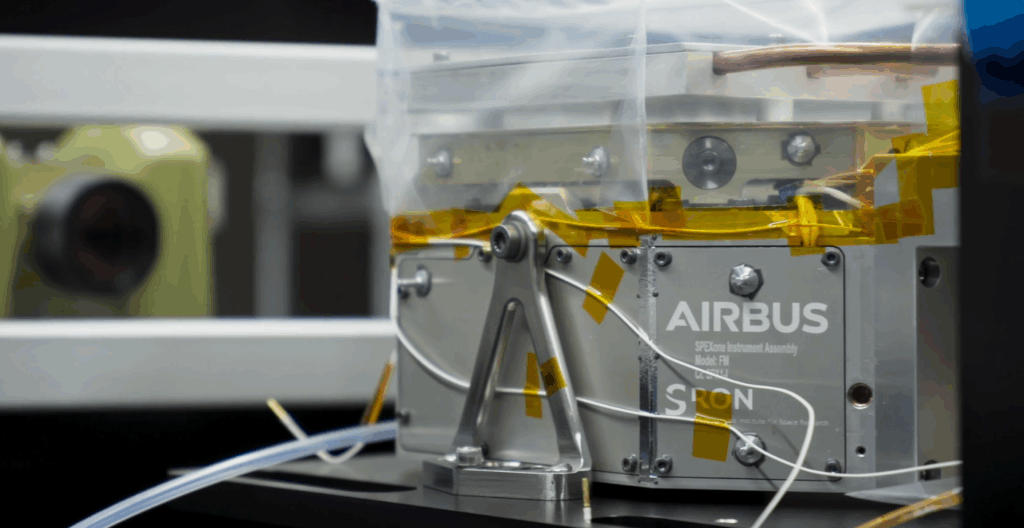On February 22th a final inspection took place of the Dutch space instrument SPEXone, in the presence of Dutch science minister Van Engelshoven (OCW) and NASA. Soon after the event the instrument will be transported to NASA. From 2023 onwards SPEXone will fly on NASA’s PACE mission, which will help researchers resolve climate issues. SPEXone is specifically developed to unravel the impact of areosols on the climate.
Aerosols are small dust particles in the air, such as soot, ash and desert dust. They have a major influence on air pollution and climate change, but their precise role is insufficiently known. That is why scenarios for global warming up to the year 2100 vary approximately 3 degrees Celsius. Most aerosols reflect light and have a cooling effect on the Earth, but they can also have a warming effect due to absorption. SPEXone will map out the properties of aerosols, such as size, shape, composition and absorbing/reflecting power.

About SPEXone
SPEXone is being developed by a Dutch consortium consisting of SRON Netherlands Institute for Space Research and Airbus Defence and Space Netherlands, supported by opto-mechanical expertise from TNO. SRON and Airbus DS NL are responsible for the design, manufacture and test of the instrument. The scientific lead is in the hands of SRON. The SPEX measurement concept was developed and prototyped by Frans Snik and Christoph Keller at Leiden University. SPEXone is a public-private initiative, made possible by NSO, with resources made available by the Dutch ministry of science and by SRON-NWO, with support from Airbus DS NL.



